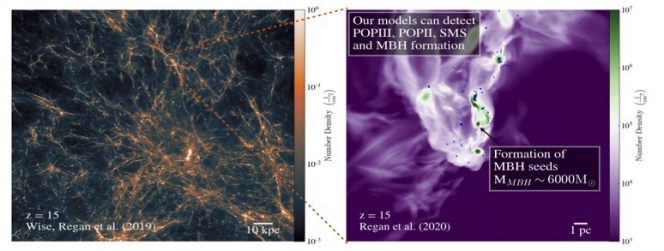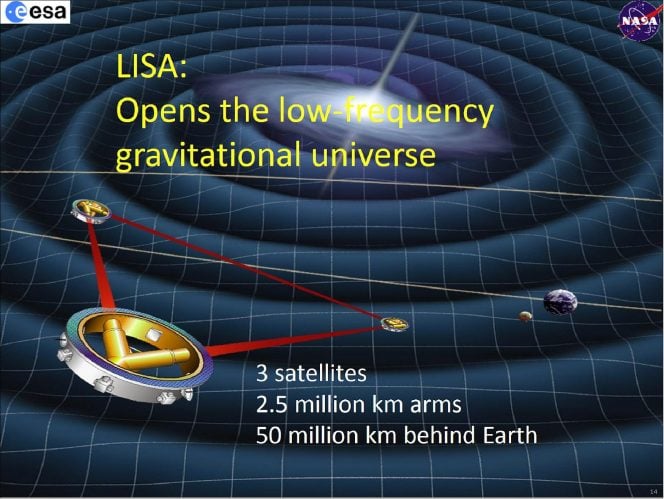Black holes
Dr. John Regan’s group works on trying to understand both the formation
mechanisms and population demographics of massive black holes. Super
massive black holes (SMBHs) are typically defined as those with masses
in excess of 1 million times the mass of the Sun. These SMBHs are found
at the heart of most, if not all, galaxies and we also observe them as
extremely luminous quasars out to very large distances (and equivalently
redshifts). The existence of such bright and therefore massive objects
at high redshift poses a significant theoretical challenge. How could
such massive objects emerge so early in the lifetime of the cosmos?

Over the few years the James Webb Space Telescope (JWST) has electrified
the field of massive black holes by detecting a new population of
massive black holes. JWST's sensitivity allows us to detect less
luminous (and hence less massive) black holes out to greater distances.
Looking forward LISA - Laser Interferometer Space Antenna - has now been
formally adopted by ESA and will be launched in the mid-2030's. LISA
will detect gravitational waves form the mergers of very distant and
very massive black holes.

Of great interest – particularly with the planned launch of the LISA -
is the existence of intermediate mass black holes (IMBHs). These are
black holes typically with masses in the range 1,000 – 1,000,000 times
the mass of the Sun. These objects should populate less massive
(so-called dwarf galaxies) and may also be the progenitors of the SMBHs.
Observations of IMBHs are difficult – IMBHs are inherently less luminous
than their more massive cousins and may also be located off-nuclear i.e.
they may not necessarily be located at galactic centres making their
detection even more challenging. Understanding the population
demographics of IMBHs is hugely important in terms of predicting merger
rates for LISA and for understanding the origin of SMBHs.
